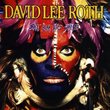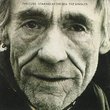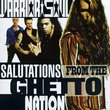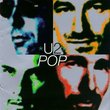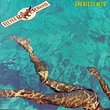| All Artists: Paik Title: The Orson Fader Members Wishing: 1 Total Copies: 0 Original Release Date: 2/4/2003 Release Date: 2/4/2003 Genre: Alternative Rock Style: Number of Discs: 1 SwapaCD Credits: 1 UPC: 808804002820 |
Search - Paik :: The Orson Fader
 | Paik The Orson Fader Genre: Alternative Rock
Paik are downright amazing. As wrong as it is to say - like a parent showing favoritism toward one of their children - Paik are quite simply our favorite band. And for plenty good reason. From the opening notes of any give... more » |
CD DetailsSynopsis
Album Description Paik are downright amazing. As wrong as it is to say - like a parent showing favoritism toward one of their children - Paik are quite simply our favorite band. And for plenty good reason. From the opening notes of any given track, any given album, Paik will suck you in and command 100% of your attention, never letting go. Formed in 1997, Paik undertook the quest for new and unexplored soundscapes using whatever means necessary. Drawing on inspiration from the urban setting of Detroit, the three members have crafted three albums so far. 1998 saw the release of their first album "Hugo Strange," a highly impressive debut of 10 relatively-brief songs with pop tendencies. Y2K brought us the 2-track CD "Spacer", a brilliant single letting us sneak a peek into their near future. In 2001, Paik dropped the bomb known as "Corridors", a 7-track masterpiece showcasing lengthier material on a grander, opus-like scale. Now, 2-years later, Paik complete the trifecta masterfully with the release of "The Orson Fader". To say they are expanding further on their past releases would be understating what is going on here. Quite simply, they've reinvented their songcraft. The amount of expansiveness and wide-open-spaciousness of these recordings has just not been accomplished before by anyone. Paik are master storytellers. Each song in their career tells it's own unique story. "The Orson Fader" a complex novel - a mindnumbingly cohesive album in which every track depends on the context within its peers. By the time it's over, this story will leave you breathless, mouth agape, eyes-wide-open... Yes, Paik is an instrumental outfit, with 3 members. Yet the lack of vocals means nothing - if vocals were to be utilized, they would definitely just get in the way. And the fact that only 3 members create so much sound and so much space simultaneously is just mindboggling. Paik's live performances have been described as "a giant, swirling, maelstrom capable of filling most any venue with lush, textured soundscapes, at volumes that let the listener stand briefly in this trio's shoes, and feel the truth and honesty from which their music emanates. An equally engaging light show allows an individual the opportunity to escape the here and now, and travel somewhere much more soothing, where time ceases to exist." Similar CDsSimilarly Requested CDs
|
CD ReviewsA stunning tour-de-force; a complete experience Micah Newman | Fort Worth, TX United States | 04/15/2004 (5 out of 5 stars) "By the time of this, their third album, the Detroit "space-rock" trio Paik is so well-in-command of their craft that everything they unleash to the world is almost frightening in its awesome power and majesty. On 2001's Corridors, Paik discovered their ability to blend kick-ass drumbeats, leisurely but authoritative pacing, maximum power from one guitar, and driving basslines in sympathy with the other two instruments, to absolutely stunning effect. On Orson Fader, Paik do not quite reach the ecstatic heights, such as "Spanning Time" and the middle third of "Spacer," that they reached on that previous album (although Fader's "Purple" comes close), but they've got another thing going here: full-on album crafting.The Orson Fader's 12 tracks consist of 7 or so full-length (which means 5-8-minute) songs woven together by shorter textural interludes. Everything segues into the next thing, and the result is an incredibly cohesive whole. Their sound has also somewhat modulated, where the bass, less chordal now, is now often more integrated into what the guitar is doing, so that the two form a more-or-less continuous spectrum of sound, from the guitar's midrange on down to the dropped-D string of the bass. The drummer has also now incorporated a booming tympani into his set, which plays a big part in the overall sound, and gives his already-compelling drumbeats even more texture and dimension.The spacious sonic journey of this album begins with the relatively short "Detroit," an overdriven, dirgey intro number that seems to set the scene in the band's own physical surroundings, that industrial Motor City. Then with "Tall Winds," they take as simple a riff as possible, firmly establish it with repetition and inversion, and do their trademark thing with it: embellish it with added volume and depth, and relentlessly push it into the stratosphere. Once already into orbit, one is greeted with "Purple," whose climax comes with an almost overwhelming power, transporting the listener out of orbit and into interplanetary space. As it segues into "Black Car," with its absolutely scorching guitar feedback-symphony, you now feel as though you are diving into the sun. Then as it devolves into a slow rhythmic figure that sounds like a vehicle chugging along on its last legs, it finally sputters and dies, and the remnants of its electrical system send out sparks and flames with its "Low Battery Transmission." Those first five tracks seem to be kind of Part I of the album, and things get going again with the twin sci-fi anthems "Ghost Ship" and "Star 80." More delectable spaciness of that nature continues, and is concluded with "Killing Windmills," whose circular bass figure recalls Corridors' "The Longest Day," and whose plangent guitar sound forms the basis for the closing short piece "Red Current."For overall effect and craftsmanship alone, this record makes it into my list of very, very, favorites. But Paik's magnificent sonic depth and visceral punch is all here in spades, too; it's a primal, in-the-bones kind of effect that precedes formal analysis, and is as pleasurable a kick in the gut as I can imagine."
|

 Track Listings (12) - Disc #1
Track Listings (12) - Disc #1
